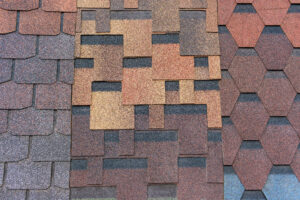The Ultimate Guide to Impact-Resistant Roofing Materials

*Updated August 21st, 2025
Have you ever wondered what it takes to protect your home from the destructive forces of nature? With severe weather events becoming more frequent, the importance of an impact-resistant roof has never been greater. But what exactly are impact-resistant roofing materials, and how do they differ from traditional asphalt shingles? This guide breaks down the pros and cons of impact-resistant shingles, helping every homeowner understand how to safeguard their property against hail damage and costly roof repairs.
Metal Roofing: A Strong Impact-Resistant Roof Option
Metal roofing is one of the most durable roofing materials available. Steel and aluminum panels are designed to withstand hail impact, high winds, and flying debris. Their interlocking design creates a seamless roof covering with impressive impact resistance.
Beyond strength, metal roofs offer energy efficiency and long lifespans, making them a popular type of roofing for areas prone to hail storms and hurricanes.
Slate: Natural Impact Resistance
Slate has long been valued in the roofing industry for its beauty and durability. This natural stone provides a class 4 impact-resistant roof surface, meaning it can withstand hail and flying debris without breaking.
Though slate comes with a higher upfront cost, its ability to last a century provides peace of mind for homeowners concerned about extreme weather.
Clay and Concrete Tiles
Clay tiles are shingles designed to endure heat and hail events, while concrete tiles are a versatile, cost-effective alternative. Both can achieve class 3 or 4 ratings in the UL (Underwriters Laboratories) rating system, which tests impact using a steel ball dropped from several feet to simulate hail impact.
These tiles are heavy and durable, making them reliable hail resistant shingles for home safety.
Composite Roofing
Composite shingles combine polymers, fiberglass, and recycled materials to mimic slate or wood while offering impact resistance. Many impact-resistant shingles are manufactured this way, providing class 4 roofing shingles that insurance companies recognize as hail-resistant shingles.
Some insurance companies offer discounts on home insurance premiums when you install these roofing products, since class 4 shingles can withstand high winds and damage from hail.
Asphalt Shingles – Standard vs. Impact-Resistant
Most homeowners are familiar with the traditional asphalt shingle, but not all are built the same. Impact-resistant asphalt roofing shingles are reinforced with polymer blends or fiberglass, giving them a class 4 rating—the highest rating available for impact-resistant roofing materials.
-
Standard shingles may crack under hail impact and cause granule loss, leading to leaks and costly repairs.
-
Class 4 rated shingles, on the other hand, are designed to protect your home from hail damage and roof leaks.
State Farm and other insurance companies note that class 4 impact resistance can help reduce hail claims and may qualify you for an insurance discount.
Rubber and Modified Bitumen Roofing
Rubber roofing absorbs the impact of hail and flying debris without puncturing, making it another strong choice for an impact-resistant roof.
Modified bitumen combines asphalt with reinforcing materials, offering a layered roof covering that can withstand high winds and class 4 hail impacts. Both are often used in commercial roofing but can also protect homes in storm-prone regions.
How Are Impact-Resistant Shingles Rated?
Impact-resistant shingles are given a class rating by Underwriters Laboratories (UL). The UL 2218 test uses a steel ball dropped onto roofing shingles to rate the impact resistance:
-
Class 1 – Lowest level of protection
-
Class 2 – Moderate impact resistance
-
Class 3 – Better durability against hail impact
-
Class 4 – Class 4 is the highest, and 4 rated shingles can withstand a steel ball up to 2 inches in diameter, simulating hail storms
For homeowners who live in an area with frequent hail events, class 4 impact-resistant shingles are worth serious consideration.
Are Impact-Resistant Shingles Worth It?
The question many ask is: Are impact-resistant shingles worth the cost?
-
Pros:
-
Provide stronger hail resistance
-
May qualify for a discount on home insurance
-
Reduce roof repairs from damage from hail and roof leaks
-
Add long-term home safety and peace of mind
-
-
Cons:
-
Cost more than standard shingles
-
Higher upfront cost may not appeal to all homeowners
-
Some shingles may still show wear after multiple hail storms
-
Still, most experts agree that impact-resistant shingles can help reduce long-term repair costs and are designed to protect your home against extreme weather.
Final Thoughts on Impact-Resistant Roofing
Whether you’re installing a new roof or upgrading your current one, understanding the pros and cons of impact-resistant shingles is key to making an informed decision. Impact-resistant roofing materials—from metal roofing to class 4 impact-resistant asphalt roofing shingles—are designed to withstand hail storms, high winds, and flying debris.
By investing in a class 4 impact-resistant roof, you not only protect your home but may also lower your insurance premium, avoid costly repairs, and gain long-lasting peace of mind.
Additional Roofing Resources
- Partial Roof Replacement: A Cost-Effective Solution for Targeted Roof Repairs
- How Much Does Metal Roofing Cost?
- Asphalt Shingles: A Complete Guide

Anna has over six years of experience in the home services and journalism industries and serves as the Content Manager at MyHomePros.com, specializing in making complex home improvement topics like HVAC, roofing, and plumbing accessible to all. With a bachelor’s degree in journalism from Auburn University, she excels in crafting localized, comprehensive guides that cater to homeowners’ unique needs. Living on both coasts of the United States has equipped her with a distinctive perspective, fueling her passion for turning any house into a cherished home through informed, personalized decision-making.
Connect with top-rated local contractors who can help you with siding, roofing, HVAC, windows, and more. Get free quotes from verified professionals in your area today.








